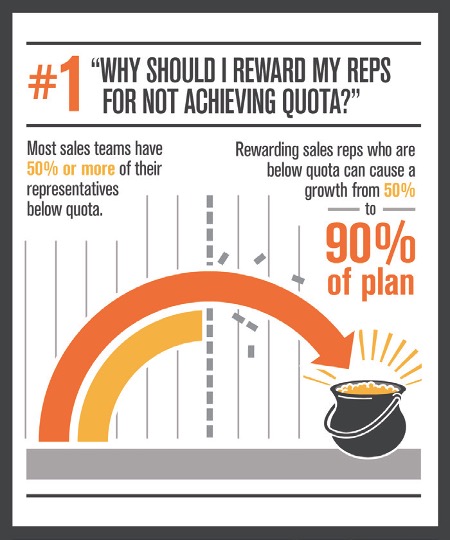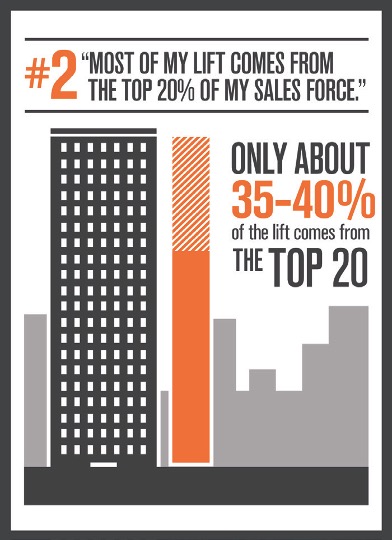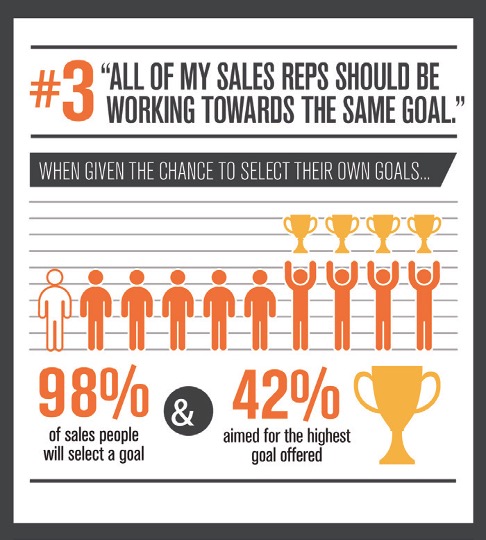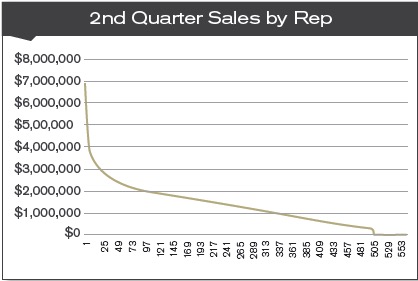Is Your Incentive Program Structure Limiting Your Sales Growth
Written by: Dave Smith, GoalQuest Product Director, Reward Systems Group - BIWORLDWIDE
If your sales incentive program is producing fewer results than expected, it may be time to examine your design approach.

3 Mistakes to Avoid When Designing Your Program
Often the tools and tactics we think will help sales really take off wind up falling flat. What’s worse, by the time you discover they’re not working as planned, you’re further into the fiscal year — and even further behind on hitting your targets.
If sales incentive programs are taking up more of your time and money while producing fewer results, it might be a good time to examine your design approach. BI WORLDWIDE contends that these are the top three most common assumptions holding back your sales incentive success.
1. “We pay our salespeople to hit their quota.”
 Salespeople are tasked with reaching or exceeding a sales quota your company generates. Whether it’s a lack of talent or experience or simply being content at their current income level, fewer than 50% of sales reps actually hit their numbers. Pair this fact with the belief that salespeople shouldn’t earn awards unless they reach their assigned quota for the quarter or year and you’ll be:
Salespeople are tasked with reaching or exceeding a sales quota your company generates. Whether it’s a lack of talent or experience or simply being content at their current income level, fewer than 50% of sales reps actually hit their numbers. Pair this fact with the belief that salespeople shouldn’t earn awards unless they reach their assigned quota for the quarter or year and you’ll be:
• Turning your back on potential sales lift from more than half of your team.
• Missing an opportunity to shift many of the “didn’t-make-its” to “hit-their-numbers” participants by engaging them in your incentive program.
Remember, reward all of your growth achievers.
Your best performers have less room to grow because they’re already closer to being maxed out than your middle players. In a study of over 150 companies’ incentive programs, we found that less than 30% of an incentive program’s lift comes from the top 25% sellers. So, if you only offer awards to those who hit their quota, you’re missing out on 70% of the real opportunity.
To maximize your program’s potential, you need everyone engaged and motivated by awards that can increase sales. Create award goals that are appropriate for individuals’ run rates — no matter how they’re performing against their quotas. You can expect strong results from your top 20% and you’ll also give your middle and lower performers a fair chance to achieve their goals.
2. “We have an 80/20 rule in our sales force.”
 Clients we initially meet assume they have an 80/20 ratio — 80% of sales from the top 20% of the sales channel — but most have never actually measured it.
Clients we initially meet assume they have an 80/20 ratio — 80% of sales from the top 20% of the sales channel — but most have never actually measured it.
Gauge the numbers and get everyone moving.
Recently, BI WORLDWIDE measured the pre-program sales of 150 incentive programs to determine if the 80/20 relationship was legitimate. And guess what? We found the actual relationship to be 80/46. This means 80% of sales for these companies were generated by the top 46% of reps — not just the top 20%. This surprising stat shows the value of motivating middle performers more than ever before.
Another incentive figure rarely measured is the percentage of incentive-driven incremental sales lift that actually comes from the top 20%. Our vast database (12 years, 700+ programs, 900,000+ participants) shows that 80% of lift in an engaging incentive program comes from the top 70-75% of the sales team.
It can get pricey to leave out middle and lower-middle players who are not hitting their numbers, especially when they’ve proven they can pull their own weight when given realistic stretch goals in a well-designed incentive program. The biggest takeaway? Major lift can be generated across your entire sales force if the opportunity is there from the get-go.
3. “We keep our short-term incentive growth goals the same for all reps.”
 What’s most likely to hinder your short-term incentive program? Assigning the same growth goals (dollar or percentage growth) to your entire sales team. The “one size doesn’t fit all” approach makes the most sense in programs created to increase results. Prove it to yourself with this simple exercise:
What’s most likely to hinder your short-term incentive program? Assigning the same growth goals (dollar or percentage growth) to your entire sales team. The “one size doesn’t fit all” approach makes the most sense in programs created to increase results. Prove it to yourself with this simple exercise: 
• Take your last quarter’s sales, stack-rank them from top to bottom and graph the results.
• Do your results shape up like this chart — a few high performers, a lot of middle performers, followed by new people and stragglers?
Stagger run rates from the start.
Let’s say you try to apply a 10% growth factor across the board in your incentive program. The risk you take in doing so is potentially asking too much from your top performers over a short period of time, especially if they aren’t engaged.
There’s an issue at the other end too. A 10% increase may be far too easy to achieve for those with low run rates. And if your low performers have the best chance of winning, your program has some flaws.
For those falling in the middle, 10% may be just right. To engage everyone with attainable stretch goals, divide your sales channel into low, medium and high producers so that run rates are similar within each segment. Once this is done, you can:
• Craft appropriate goals for all three of your sales groups.
• Adjust the award values by group to reflect the variance in incremental contributions.
A word of caution regarding award structure: avoid decreasing values for lower groups so much that they lose interest. Choose awards valuable enough to make all participants feel like winners when they reach their goal.
A few quick adjustments can get you there.
In the end, improving your company’s sales incentive results only takes a few simple changes. Just remember these three takeaways:
1. Excluding those who aren’t at quota removes a potentially huge amount of program lift.
2. 70% of a program’s incremental results comes from outside the top 20%.
3. By segmenting your audience and customizing goals and awards, you give everyone a chance to earn an award for growth that is valuable.
Motivate your sales team and deliver results.











